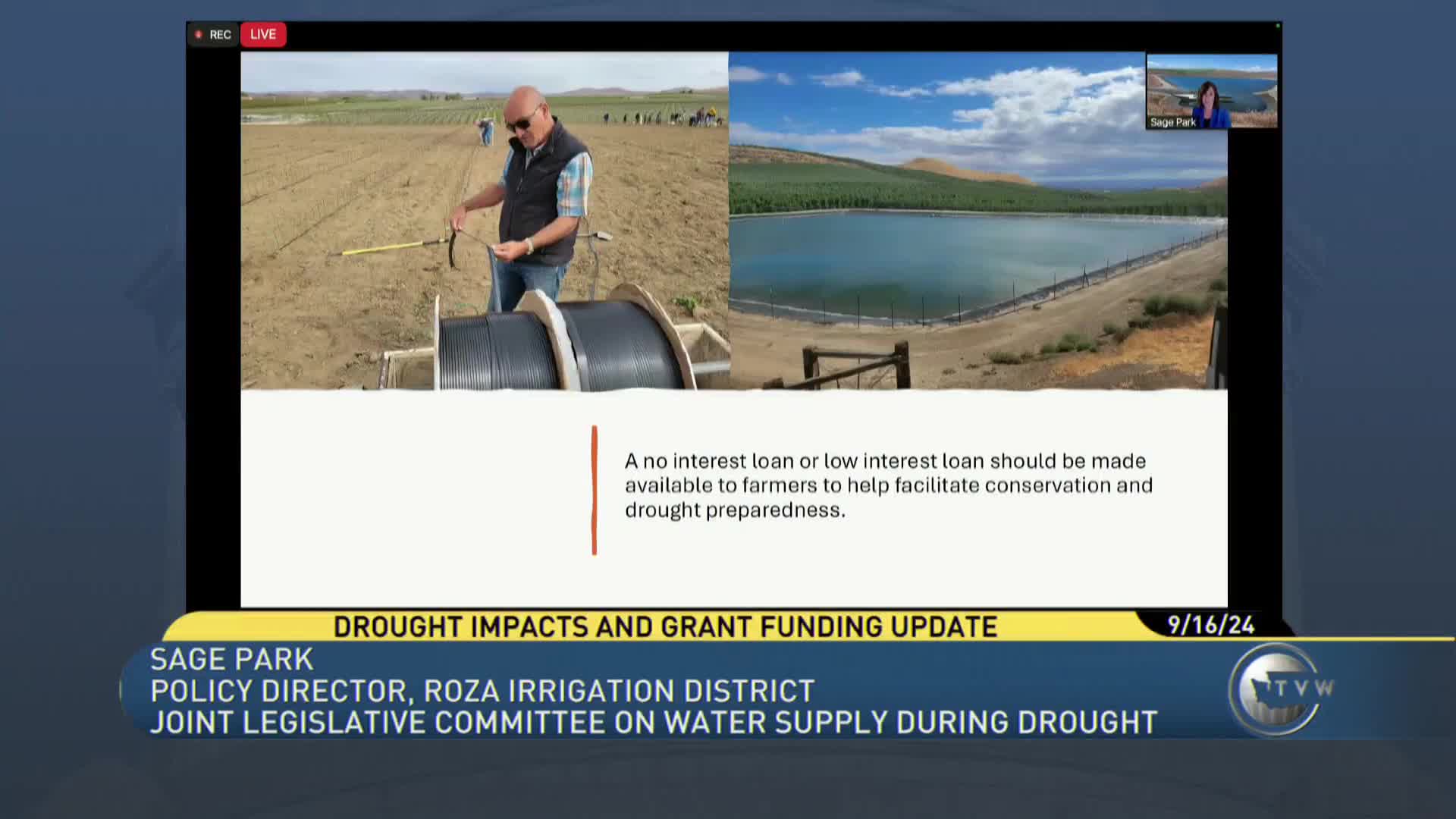Irrigation District Faces Catastrophic Threat After Wildfire Damage
September 16, 2024 | Joint Legislative Committee on Water Supply During Drought, Joint, Work Groups & Task Forces, Legislative Sessions, Washington
This article was created by AI summarizing key points discussed. AI makes mistakes, so for full details and context, please refer to the video of the full meeting. Please report any errors so we can fix them. Report an error »

In a recent government meeting, officials discussed critical water management strategies and the severe impacts of wildfires on irrigation infrastructure in the Yakima region. Rick Valicoff, board president, highlighted the implementation of drip irrigation systems aimed at enhancing water conservation efforts. He also presented a new emergency drought well program, set to launch by early next year, which will allow growers to lease water during drought conditions, with a proposed cost-sharing model.
Valicoff emphasized the need for additional funding tied to capital projects for irrigation districts, noting that many have already identified necessary improvements. This funding is crucial for enhancing drought preparedness and ensuring sustainable water delivery.
The meeting transitioned to a presentation by Travis Okelberry, district manager of the Yakima-Tieton Irrigation District (YTID), who detailed the devastating effects of the recent Rimrock Retreat Wildfire. Covering 35,000 acres, YTID supports a significant agricultural economy, generating $700 million annually. The wildfire has severely damaged the district's 114-year-old canal infrastructure, leading to increased risks of landslides and erosion, which threaten water delivery and, consequently, local crop yields.
Okelberry outlined the dire economic implications of potential canal failure, projecting losses of up to $3 billion for Yakima County. He described the challenges faced during emergency shutdowns, which left local growers without essential water for their crops, jeopardizing their livelihoods. The canal also plays a critical role in fire suppression, and its compromised state has raised concerns about community safety.
The presentation underscored the urgent need for state and federal advocacy to secure funding for replacing aging infrastructure, with an estimated cost of $240 million. YTID is prepared to contribute $100 million but requires additional support to ensure the resilience of the irrigation system and the agricultural economy in the face of climate change and increasing wildfire risks.
As the meeting concluded, the discussions highlighted the interconnectedness of water management, agricultural sustainability, and community safety in the Yakima region, emphasizing the need for proactive measures to address these pressing challenges.
Valicoff emphasized the need for additional funding tied to capital projects for irrigation districts, noting that many have already identified necessary improvements. This funding is crucial for enhancing drought preparedness and ensuring sustainable water delivery.
The meeting transitioned to a presentation by Travis Okelberry, district manager of the Yakima-Tieton Irrigation District (YTID), who detailed the devastating effects of the recent Rimrock Retreat Wildfire. Covering 35,000 acres, YTID supports a significant agricultural economy, generating $700 million annually. The wildfire has severely damaged the district's 114-year-old canal infrastructure, leading to increased risks of landslides and erosion, which threaten water delivery and, consequently, local crop yields.
Okelberry outlined the dire economic implications of potential canal failure, projecting losses of up to $3 billion for Yakima County. He described the challenges faced during emergency shutdowns, which left local growers without essential water for their crops, jeopardizing their livelihoods. The canal also plays a critical role in fire suppression, and its compromised state has raised concerns about community safety.
The presentation underscored the urgent need for state and federal advocacy to secure funding for replacing aging infrastructure, with an estimated cost of $240 million. YTID is prepared to contribute $100 million but requires additional support to ensure the resilience of the irrigation system and the agricultural economy in the face of climate change and increasing wildfire risks.
As the meeting concluded, the discussions highlighted the interconnectedness of water management, agricultural sustainability, and community safety in the Yakima region, emphasizing the need for proactive measures to address these pressing challenges.
View full meeting
This article is based on a recent meeting—watch the full video and explore the complete transcript for deeper insights into the discussion.
View full meeting
